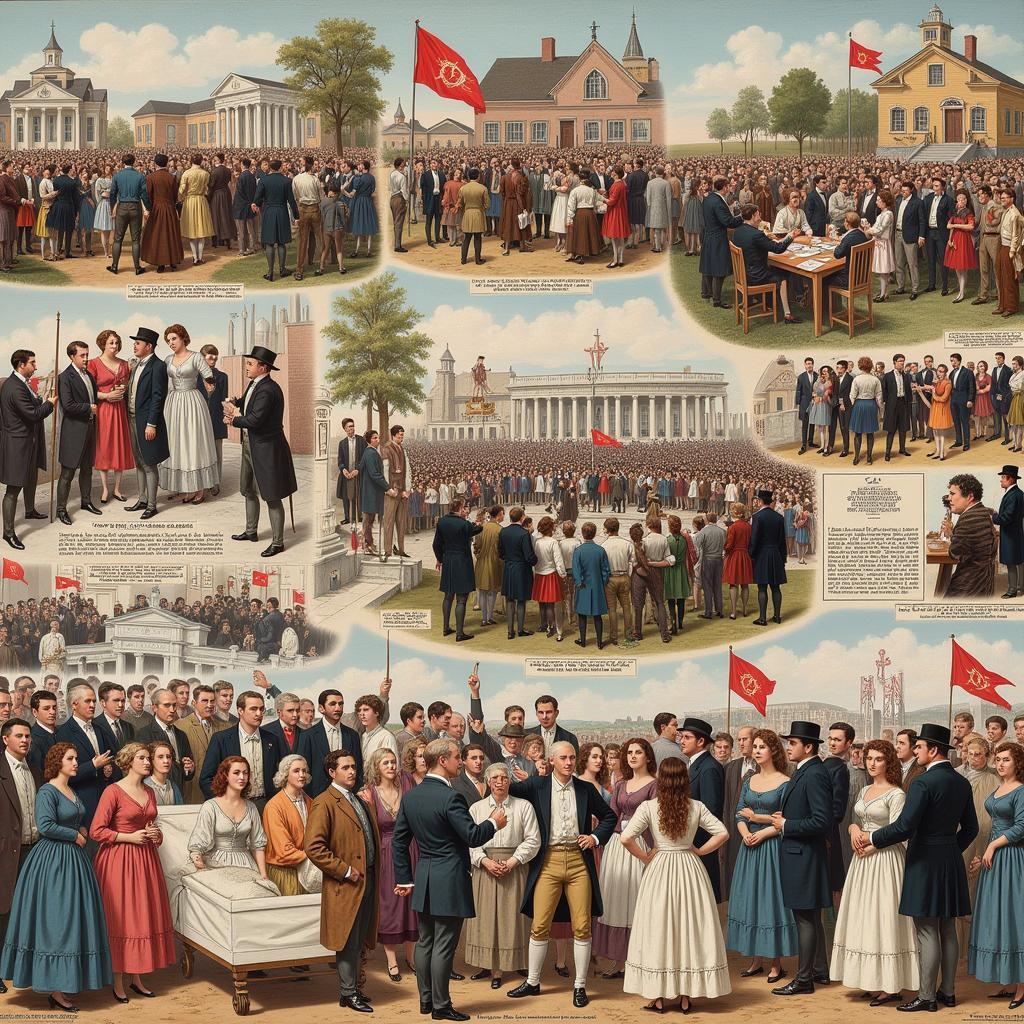The Second Great Awakening, a fervent religious revival that swept across America during the early 19th century, profoundly impacted the nation’s social fabric. More than just a surge in religious fervor, it ignited a spirit of reform that touched upon nearly every aspect of American life. From education and social justice to morality and personal responsibility, the movement’s ripples continue to shape American society today.
Religious Ferment and Social Change
At the heart of the Second Great Awakening was a message of personal salvation achieved through emotional religious experiences. Unlike the formal, intellectual approach of earlier religious traditions, these revivals emphasized personal conversion and a direct, emotional connection with God. This resonated deeply with the American ideal of individual agency and led to a surge in church membership across various denominations, particularly among Baptists and Methodists.
 Second Great Awakening Camp Meeting
Second Great Awakening Camp Meeting
But the Second Great Awakening’s impact extended far beyond church walls. The emphasis on personal responsibility for seeking salvation bled into a fervor for societal reform. If individuals could change their lives through faith, they could also change the world.
A Nation Transformed: Social Reforms of the Second Great Awakening
The Second Great Awakening’s message of individual transformation fueled an era of remarkable social reform movements. Let’s delve into some of the key areas impacted:
1. Abolitionism: The Second Great Awakening played a pivotal role in fueling the abolitionist movement. Preachers like Frederick Douglass, himself a former slave, used powerful oratory to denounce the evils of slavery. The movement gained traction as more Americans viewed slavery as a sin that contradicted their religious beliefs and the nation’s ideals of liberty.
2. Temperance Movement: Concerned with the social ills associated with alcohol consumption, reformers, largely women, actively campaigned for temperance or complete abstinence from alcohol. They believed that alcohol fueled poverty, domestic violence, and moral decay. This movement eventually led to the passage of Prohibition in the 20th century.
3. Education Reform: Education was deemed essential for individual growth and moral development. Horace Mann, a prominent figure in the education reform movement, advocated for free, public education for all children, regardless of their social standing. This period saw the establishment of numerous public schools and colleges, expanding access to education.
 Second Great Awakening Reform Movements
Second Great Awakening Reform Movements
4. Women’s Rights: The Second Great Awakening provided women with an unprecedented platform for public activism, particularly in the abolitionist and temperance movements. This involvement in social causes laid the groundwork for the women’s rights movement, culminating in the Seneca Falls Convention of 1848 and the ongoing struggle for women’s suffrage and equal rights.
A Lasting Legacy: The Second Great Awakening’s Enduring Impact
The Second Great Awakening, though largely concluded by the mid-19th century, left an enduring mark on American society. It fostered an environment of social consciousness, emphasizing individual action as a force for positive change. The movements it inspired, from abolitionism to women’s rights, continue to resonate in contemporary struggles for social justice.
While the Second Great Awakening may be a historical event, its legacy reminds us of the power of belief to inspire action and shape the course of a nation. Understanding this period of intense religious and social fervor allows us to better comprehend the roots of many contemporary social movements and the enduring American spirit of striving for a more just and equitable society.